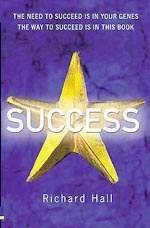What is the techniques typically used to attract customers to a new business. Traditional strategies like networking and mailings will do the job, but they won't do the best job.
If you're a startup, the fastest way to get the cash registers ringing is a little-used method that involves forming "host-beneficiary" relationships with established businesses that cater to a target audience similar to yours. Then you promote yourself to their database with a special offer presented as a gift from the older business.
The beauty of this arrangement is that the startup (the beneficiary) can instantly reach large numbers of highly qualified prospects with the tacit endorsement of the established business (the host). The host is willing to participate because it's a way to reward loyal customers without incurring any costs. The rookie gains new customers, while the veteran gains goodwill.
One startup that successfully used this technique was a high-end women's clothing boutique. The store arranged to give a free silk kimono to every female customer of a local BMW dealership who brought in a letter sent by the dealership offering the gown as a gift for their past patronage. The kimono had to be picked up at the boutique.
More than 600 women responded, picking up $100 kimonos that cost the store just $16 a piece. Those 600 women spent an average of $400 on other merchandise during their initial visit. Do the math, and you'll see that the startup spent $9,600 to generate some $240,000 in sales--and, not incidentally, to begin building its own clientele.
Host-beneficiary marketing is actually a simple and relatively inexpensive process that will deliver solid results if you follow a few basic rules:
1. Precisely define your target audience. "Women 35 to 55" might be a start, but it's not enough. Create a detailed profile of your target customer. The more segments you can identify, the more potential hosts you can approach.
The women's clothing boutique that marketed to BMW owners, for example, determined that their likely customers drove certain types of cars, patronized a certain class of hair salon, belonged to a health club, and were likely to play bridge. A birdseed store might come up with a list that includes consumers who shop at outdoor equipment outfitters or are affiliated with local conservation groups.
2. Identify local businesses that serve the same market segments. That way, you can not only bring people in the door for your initial offer, but also increase the likelihood that they'll return to give you repeat business.
For a cigar store, logical host partners might include better men's clothiers, upscale shoe stores, luxury car dealerships and country clubs. And don't forget non-commercial organizations like Rotary or Kiwanis.
3. Develop a clear offer for each prospective partner. Come up with a free or deeply discounted product or service that has a high perceived value for the consumer with a low dollar cost for you.
One new computer support business offered a voucher worth two free hours of computer repair to the small business clients of a local accountant. A jewelry store offered free jewelry cleaning to clients of a hair salon. A marketing consultant offered a free seminar on how to run sales to one local newspaper's advertisers. A framing shop offered free photo framing to a photographic supply store's top 200 customers.
4. Pitch the plan, highlighting the benefits to the host business. Emphasize that it's a way for the established business to reward their customers at no expense and with virtually no effort. It's also a way to reach out to customers without overtly trying to make a new sale.
5. Supply a letter for the host's use. Providing a draft "offer" letter that can be sent to the host's customers on the host's letterhead will help put the plan into motion quickly. It will also show the partner how easy it will be for him to participate.
Some businesses will allow the letter to be inserted into their monthly invoices or newsletters at no cost to you. Others will charge or require that you pay for a separate mailing. It's a small price to pay for access to the host business' customer base.
6. Develop a strategy to convert redeemers to repeat customers. This, after all, is your long-term goal. For the women's boutique that gave away a kimono, the strategy was to encourage browsing and lure shoppers into dressing rooms to try the merchandise. For one new bakery that gave away a chocolate éclair, the approach was to hand out a buy-five-get-one-free VIP card with the free pastry.
Whatever the specific plan, the host-beneficiary method is the single most effective way to quickly attract a critical mass of qualified customers to a new business. Instead of beating the bushes for customers with individual referrals or scattershot ads, you can tap into a targeted group of consumers en masse to jumpstart sales.
Best of all, you're piggybacking on the success of another entrepreneur who has spent years building a solid customer base. In many ways, this eliminates the need to reinvent the wheel. For a startup facing so many other challenges, it's just smart business.
Wednesday, October 31, 2007
Tuesday, October 23, 2007
SOCIAL ENTREPRENEURS
In June 2006, Bill Gates announced he was stepping down from his full-time role at Microsoft and shifting his focus to the Bill and Melinda Gates Foundation. When the world's richest entrepreneur decides to take a step in the nonprofit direction, he may be onto something.
In the last decade, a generation of social entrepreneurs has become increasingly visible by creating self-sustaining businesses. Social entrepreneurs are similar to regular entrepreneurs with one main difference--their gains aren't measured in financial profit, but by the impact they have on society.
Many entrepreneurs have started social enterprises, breaking nonprofit tradition by blending mission with money, referred to as "double bottom line" businesses. Jerr Boschee, executive director and founder of The Institute for Social Entrepreneurship, says for a while, nonprofits were hung up on the double bottom line because it seemed contradictory to merge doing well with doing good. But Boschee says self-sufficiency has become necessary for many nonprofit groups to operate. "We have today three times as many nonprofits as we had 30 years ago, and they're all at the same watering hole."
No longer limited by philanthropic donations and public subsidies, these organizations now have a way of being self-sufficient while still helping others in social need. And for some of these organizations, helping others means helping them start their own businesses.
Helping Others Get Started
Mi Kitchen es Su Kitchen is a kitchen incubator in Queens, New York, dedicated to helping struggling entrepreneurs start and develop food businesses. The kitchen offers business counseling, mentoring and support for entrepreneurs who have a line of goods, but are limited in funds and business knowledge.
"We go through the whole thing," says founder Kathrine Gregory. "How do you market? How do you write a business plan?"
The 55-year-old food industry veteran is an entrepreneur herself and offers her know-how by partnering with nonprofits that house kitchen facilities. In 1996, Gregory started her kitchen incubator concept with an organization that had an 850-square-foot kitchen in Brooklyn. The facility was being used for job training, but operation costs were quickly eating up the funding. Gregory convinced the board to let her test the kitchen incubator concept, and the resulting profits helped turn the nonprofit into a self-sustaining business.
Today, Mi Kitchen es Su Kitchen operates in conjunction with the Consortium for Worker Education and Artisan Baking Center. With a 5,000-square-foot facility, the kitchen is used for culinary arts training, general education and ESL courses during the day. At night the kitchen transforms into a bustling entrepreneurial atmosphere, complete with a dough press, chocolate melter, and a variety of mixers and ovens.
According to Gregory, most entrepreneurs at Mi Kitchen es Su Kitchen--who pay $180 to $220 per shift to use the space--turn a profit within the first six to 12 months. The revenue made from rentals has totaled about $200,000.
"People think this is an amazing concept," Gregory says. "It's really a win-win, everyplace that you look." She believes that leveling the playing field for low-income entrepreneurs is one reason her idea has hit home with the local community.
Kiva founders Matt Flannery, 30, and his wife, Jessica, also took the business partner angle with their Kiva.orgmicrolending website. The two started Kiva after traveling to Africa and learning of the enterprising atmosphere there.
"We interviewed people every day for weeks and talked about people's business plans," says Matt. "I thought it was fascinating that I was talking about business, business plans and scaling an inventory challenges in a place that I only associated with deep poverty."
The experience stayed with Matt and Jessica when the two returned to California and partnered with four others, working out of coffee shops and a tiny San Francisco apartment to develop the Kiva website and concept. Their goal remains showing people the business dynamic they experienced in Africa. "It was a different take on poverty, a different take on Africa than you typically hear when you're out here in the United States," Matt says.
On the Kiva website, lenders can donate to entrepreneurs trying to start a business in third-world countries. Loans start at $25, which goes a long way in the third world. The entrepreneurs pay back the loans 99 percent of the time--a remarkable default rate in the finance world. "[It's] connecting as an equal or a business partner, an entrepreneur, rather than as a charitable endeavor or benefactor or taking pity on someone else," Matt says.
And pity is something Matt says the media has thrived on for some time. "Often we want to hear about war and bloodshed and disease and that's only a small part of the story about what goes on in a huge continent like Africa," he adds.
Like Gregory, Matt also struggled to convince others about the viability of his idea. "One attribute of good ideas is that they challenge people's existing mindset," he says. "Now that I know that, I wouldn't have put so much weight in other people's opinions."
Why It's Working
Despite some skepticism, "Social entrepreneurship is really taking off around the world," says David Bornstein, author of How to Change the World: Social Entrepreneurs and the Power of New Ideas, which has been translated into 16 languages. In his book, Bornstein chronicles the work of Ashoka, an international organization that helps fund entrepreneurs with innovative solutions to social problems.
According to Bornstein, the relentless won't-take-no-for-an-answer quality of entrepreneurs is what gives them their edge in business. "They absorb the failure, they learn, they surround themselves with a good team and then they redirect." These same attributes, when applied in the social realm, can result in community-changing solutions.
In the end, Gregory says it's the energy of the entrepreneurs she comes into contact with that sustain her in her business. For Matt and Jessica, being part of something larger than themselves has inspired them.
"It's not about me, it's not about my organization," Matt says. "It's about people connecting to people and using technology as a conduit."
In the last decade, a generation of social entrepreneurs has become increasingly visible by creating self-sustaining businesses. Social entrepreneurs are similar to regular entrepreneurs with one main difference--their gains aren't measured in financial profit, but by the impact they have on society.
Many entrepreneurs have started social enterprises, breaking nonprofit tradition by blending mission with money, referred to as "double bottom line" businesses. Jerr Boschee, executive director and founder of The Institute for Social Entrepreneurship, says for a while, nonprofits were hung up on the double bottom line because it seemed contradictory to merge doing well with doing good. But Boschee says self-sufficiency has become necessary for many nonprofit groups to operate. "We have today three times as many nonprofits as we had 30 years ago, and they're all at the same watering hole."
No longer limited by philanthropic donations and public subsidies, these organizations now have a way of being self-sufficient while still helping others in social need. And for some of these organizations, helping others means helping them start their own businesses.
Helping Others Get Started
Mi Kitchen es Su Kitchen is a kitchen incubator in Queens, New York, dedicated to helping struggling entrepreneurs start and develop food businesses. The kitchen offers business counseling, mentoring and support for entrepreneurs who have a line of goods, but are limited in funds and business knowledge.
"We go through the whole thing," says founder Kathrine Gregory. "How do you market? How do you write a business plan?"
The 55-year-old food industry veteran is an entrepreneur herself and offers her know-how by partnering with nonprofits that house kitchen facilities. In 1996, Gregory started her kitchen incubator concept with an organization that had an 850-square-foot kitchen in Brooklyn. The facility was being used for job training, but operation costs were quickly eating up the funding. Gregory convinced the board to let her test the kitchen incubator concept, and the resulting profits helped turn the nonprofit into a self-sustaining business.
Today, Mi Kitchen es Su Kitchen operates in conjunction with the Consortium for Worker Education and Artisan Baking Center. With a 5,000-square-foot facility, the kitchen is used for culinary arts training, general education and ESL courses during the day. At night the kitchen transforms into a bustling entrepreneurial atmosphere, complete with a dough press, chocolate melter, and a variety of mixers and ovens.
According to Gregory, most entrepreneurs at Mi Kitchen es Su Kitchen--who pay $180 to $220 per shift to use the space--turn a profit within the first six to 12 months. The revenue made from rentals has totaled about $200,000.
"People think this is an amazing concept," Gregory says. "It's really a win-win, everyplace that you look." She believes that leveling the playing field for low-income entrepreneurs is one reason her idea has hit home with the local community.
Kiva founders Matt Flannery, 30, and his wife, Jessica, also took the business partner angle with their Kiva.orgmicrolending website. The two started Kiva after traveling to Africa and learning of the enterprising atmosphere there.
"We interviewed people every day for weeks and talked about people's business plans," says Matt. "I thought it was fascinating that I was talking about business, business plans and scaling an inventory challenges in a place that I only associated with deep poverty."
The experience stayed with Matt and Jessica when the two returned to California and partnered with four others, working out of coffee shops and a tiny San Francisco apartment to develop the Kiva website and concept. Their goal remains showing people the business dynamic they experienced in Africa. "It was a different take on poverty, a different take on Africa than you typically hear when you're out here in the United States," Matt says.
On the Kiva website, lenders can donate to entrepreneurs trying to start a business in third-world countries. Loans start at $25, which goes a long way in the third world. The entrepreneurs pay back the loans 99 percent of the time--a remarkable default rate in the finance world. "[It's] connecting as an equal or a business partner, an entrepreneur, rather than as a charitable endeavor or benefactor or taking pity on someone else," Matt says.
And pity is something Matt says the media has thrived on for some time. "Often we want to hear about war and bloodshed and disease and that's only a small part of the story about what goes on in a huge continent like Africa," he adds.
Like Gregory, Matt also struggled to convince others about the viability of his idea. "One attribute of good ideas is that they challenge people's existing mindset," he says. "Now that I know that, I wouldn't have put so much weight in other people's opinions."
Why It's Working
Despite some skepticism, "Social entrepreneurship is really taking off around the world," says David Bornstein, author of How to Change the World: Social Entrepreneurs and the Power of New Ideas, which has been translated into 16 languages. In his book, Bornstein chronicles the work of Ashoka, an international organization that helps fund entrepreneurs with innovative solutions to social problems.
According to Bornstein, the relentless won't-take-no-for-an-answer quality of entrepreneurs is what gives them their edge in business. "They absorb the failure, they learn, they surround themselves with a good team and then they redirect." These same attributes, when applied in the social realm, can result in community-changing solutions.
In the end, Gregory says it's the energy of the entrepreneurs she comes into contact with that sustain her in her business. For Matt and Jessica, being part of something larger than themselves has inspired them.
"It's not about me, it's not about my organization," Matt says. "It's about people connecting to people and using technology as a conduit."
Wednesday, October 17, 2007
FOOTSTEPS OF THE SUCCESSFUL PEOPLES
What do Sir Richard Branson and Michael Dell have in common ?
Aside from their obvious success and wealth today, they were both recognized by Entrepreneur magazine as "Young Millionaires" in the late '80s. When we first interviewed Dell, he was 23 years old and fresh out of college. He spoke about the struggles of running a $6 million business while attending school, but said the rewards were more than worth it. And you can bet that today, as the world's second-largest PC maker, he'd say the exact same thing.
Our past Young Millionaires have plenty in common; for instance, many of their ideas were initially greeted with skepticism. That's what happened to California Pizza Kitchen founders Larry Flax and Rick Rosenfield, who told us in 1986 that people thought they were crazy for going into the restaurant business. Yet today, CPK is an industry leader with more than 210 locations in 29 states and eight countries.
When we first highlighted the businesses below, they were relatively unknown. But now, they're household names virtually synonymous with the products they sell. Find out just how far they've come.
Liz Lange, 40
Founder of Liz Lange Maternity
Featured in November 2001
Then: In 1996, prospective retailers told Lange that pregnant women wouldn't spend money on her sophisticated maternity wear. Ignoring them, Lange borrowed money from friends and family and opened a small office in New York City, where she sold made-to-order clothing to women by appointment. Thanks to word-of-mouth, Lange's business started booming, and in 2001, she reported $3 million plus in sales.
Now: Lange continues to prove those retailers wrong. Today, the Liz Lange Maternity Collection, which celebrates its 10th anniversary this month, can be found at Lange's three Liz Lange Maternity flagship boutiques, and her secondary line, Liz Lange for Target, is the exclusive maternity line at all Target stores and on Target.com. Though Lange wouldn't release sales figures, she says the company has grown in huge multiples since 2001. Lange adds that her constant activity, which includes lecturing around the country, writing her monthly column for Prevention magazine, and spending time with her family, suits her perfectly. "I'd be very bored without it. I've always dreamt big, but never thought it could be like this," she says. "Not a day goes by that I don't get stopped on the street or receive an e-mail from someone telling me I made a difference in their life."
Larry Leight, 54
Co-founder of Oliver Peoples
Featured in October 1989
Then: How many companies can say their second year of sales surpassed their first by 400 percent? Not many. But Oliver Peoples, which began selling antique eyewear in 1986, reported that statistic to Entrepreneur back in 1989. "The business has been a giant success, and we're still young!" said Leight. In 1987, Oliver Peoples created its own brand, Oliver Peoples Eyewear, and named Leight the chief designer.
Now: Oliver Peoples is now preparing to launch its 20th anniversary campaign and showcase its new collections. Since we last spoke with Leight, he's been named one of the top nine American designers by Conde Nast Publications and Ford Motor Company. Though the company has changed, it's continued to grow dramatically. In fact, Leight says the company continues exceeding sales projections each year. Perhaps the most important business lesson Leight has learned is to not give up. "Even if everyone is against you, if you are passionate about something, you have to fight for it," says Leight. As for the next 20 years, Leight hopes to continue designing expressive, stimulating eyewear that will appeal to the brand's global clientele.
Richard Allred, 44
Founder of Toes on the Nose
Featured in November 1999
Then: Sometimes you have to test out more than one path before settling on a career. That's what Allred learned after graduating from the University of Southern California and getting involved with real estate. After he realized it wasn't the right path for him, Allred decided to take a leap of faith and gather $110,000 from friends and savings to build his company, creating Hawaiian-print clothing. When interviewed in 1999, Allred's 7-year-old company was expecting to double from $5 million to $10 million in sales that year.
Now: When we last spoke with Allred, he said he hoped his casual, classic surf clothing would become timeless fashion. Now, with 33 employees and about eight years under his belt, Allred can be confident that Toes on the Nose has done just that. Though Allred prefers not to release his total sales volume anymore, he says the company has been focusing on expanding internationally and has established beneficial partnerships with International Marketing Group. "We're doing a lot. We've leveraged our brand in different marketplaces, which has allowed us to grow with the help of other peoples' expertise," says Allred. But more than anything, Allred says the last 15 years have taught him the importance of a good internal support team. Since his marriage and the birth of his daughter, Allred has been forced to learn how to delegate and trust in others' abilities.
Tony Hsieh, 33
CEO and Director of Zappos.com
Featured in November 2003
Then: It all started in 1999 when Nick Swinmurn made an unproductive trip to the mall in search of shoes. Disappointed by his lack of purchases, Swinmurn got the idea for Zappos.com, a one-stop shop for men's, women's and children's shoes. But first, Swinmurn needed financial backing. He persuaded Tony Hsieh, who had earned $270 million from selling LinkExchange to Microsoft in 1998, to jump on board. "On the surface, it seemed like the quintessential poster child for a bad dotcom idea," said Hsieh four years ago. But after recognizing the $40 billion market, Hsieh saw potential. By 2003, the company was projecting $65 million in sales.
Now: Potential was an understatement. This year, Zappos.com--which is derived from the Spanish word for shoes, zapatos--is projecting $800 million in sales, bringing the company that much closer to its original goal of achieving $1 billion in gross merchandise sales by 2010. But not everything has remained constant with the company, starting with its image. "Back in 2003, we thought of ourselves as a shoe company that offered great service. Today, we really think of the Zappos brand as about great service, and we just happen to sell shoes," says Hsieh. Zappos.com has expanded by adding apparel, handbags, sunglasses and watches to the site, and is promising more to come. Another key change: Founder Swinmurn left Zappos in 2006 to start STAGR, a website focusing on customized apparel.
Julie Aigner-Clark, 41
Founder of The Baby Einstein Company
Featured in November 2000
Then: From the beginning, Aigner-Clark's business ambitions have been focused on her family. They started with her infant daughter, Aspen, in 1995, when Aigner-Clark realized there were no age-appropriate products for sharing her passion for art and classical music. So the former teacher took matters into her own hands and created her first video, Baby Einstein, featuring captivating pictures and mothers speaking different languages. After pitching her idea for two years and not making any progress, Aigner-Clark got her big break at the American International Toy Fair in New York City, where buyers snatched up her product. By 2000, the company had reached sales of $10 million.
Now: In 2001, Baby Einstein was acquired by The Walt Disney Company, who continues nurturing the brand and has seen sales climb past the $200 million mark. As for Aigner-Clark, it's been a bittersweet transition. "It's not as if my 'baby' grew up and went to college; it's as if my baby was picked up by an alien space craft and beamed to another planet," Aigner-Clark says. Perhaps the best lesson she's learned through it all: "Don't take anything for granted. Enjoy the moment. Recognize the beauty and good fortune. And take pictures." This ambitious mother of two, who was diagnosed with breast cancer in 2004, shows no signs of slowing down. She recently started a new business, The Safe Side, a nonprofit that deals with children's safety, and she's gone back to her roots by teaching literature two days a week.
Aside from their obvious success and wealth today, they were both recognized by Entrepreneur magazine as "Young Millionaires" in the late '80s. When we first interviewed Dell, he was 23 years old and fresh out of college. He spoke about the struggles of running a $6 million business while attending school, but said the rewards were more than worth it. And you can bet that today, as the world's second-largest PC maker, he'd say the exact same thing.
Our past Young Millionaires have plenty in common; for instance, many of their ideas were initially greeted with skepticism. That's what happened to California Pizza Kitchen founders Larry Flax and Rick Rosenfield, who told us in 1986 that people thought they were crazy for going into the restaurant business. Yet today, CPK is an industry leader with more than 210 locations in 29 states and eight countries.
When we first highlighted the businesses below, they were relatively unknown. But now, they're household names virtually synonymous with the products they sell. Find out just how far they've come.
Liz Lange, 40
Founder of Liz Lange Maternity
Featured in November 2001
Then: In 1996, prospective retailers told Lange that pregnant women wouldn't spend money on her sophisticated maternity wear. Ignoring them, Lange borrowed money from friends and family and opened a small office in New York City, where she sold made-to-order clothing to women by appointment. Thanks to word-of-mouth, Lange's business started booming, and in 2001, she reported $3 million plus in sales.
Now: Lange continues to prove those retailers wrong. Today, the Liz Lange Maternity Collection, which celebrates its 10th anniversary this month, can be found at Lange's three Liz Lange Maternity flagship boutiques, and her secondary line, Liz Lange for Target, is the exclusive maternity line at all Target stores and on Target.com. Though Lange wouldn't release sales figures, she says the company has grown in huge multiples since 2001. Lange adds that her constant activity, which includes lecturing around the country, writing her monthly column for Prevention magazine, and spending time with her family, suits her perfectly. "I'd be very bored without it. I've always dreamt big, but never thought it could be like this," she says. "Not a day goes by that I don't get stopped on the street or receive an e-mail from someone telling me I made a difference in their life."
Larry Leight, 54
Co-founder of Oliver Peoples
Featured in October 1989
Then: How many companies can say their second year of sales surpassed their first by 400 percent? Not many. But Oliver Peoples, which began selling antique eyewear in 1986, reported that statistic to Entrepreneur back in 1989. "The business has been a giant success, and we're still young!" said Leight. In 1987, Oliver Peoples created its own brand, Oliver Peoples Eyewear, and named Leight the chief designer.
Now: Oliver Peoples is now preparing to launch its 20th anniversary campaign and showcase its new collections. Since we last spoke with Leight, he's been named one of the top nine American designers by Conde Nast Publications and Ford Motor Company. Though the company has changed, it's continued to grow dramatically. In fact, Leight says the company continues exceeding sales projections each year. Perhaps the most important business lesson Leight has learned is to not give up. "Even if everyone is against you, if you are passionate about something, you have to fight for it," says Leight. As for the next 20 years, Leight hopes to continue designing expressive, stimulating eyewear that will appeal to the brand's global clientele.
Richard Allred, 44
Founder of Toes on the Nose
Featured in November 1999
Then: Sometimes you have to test out more than one path before settling on a career. That's what Allred learned after graduating from the University of Southern California and getting involved with real estate. After he realized it wasn't the right path for him, Allred decided to take a leap of faith and gather $110,000 from friends and savings to build his company, creating Hawaiian-print clothing. When interviewed in 1999, Allred's 7-year-old company was expecting to double from $5 million to $10 million in sales that year.
Now: When we last spoke with Allred, he said he hoped his casual, classic surf clothing would become timeless fashion. Now, with 33 employees and about eight years under his belt, Allred can be confident that Toes on the Nose has done just that. Though Allred prefers not to release his total sales volume anymore, he says the company has been focusing on expanding internationally and has established beneficial partnerships with International Marketing Group. "We're doing a lot. We've leveraged our brand in different marketplaces, which has allowed us to grow with the help of other peoples' expertise," says Allred. But more than anything, Allred says the last 15 years have taught him the importance of a good internal support team. Since his marriage and the birth of his daughter, Allred has been forced to learn how to delegate and trust in others' abilities.
Tony Hsieh, 33
CEO and Director of Zappos.com
Featured in November 2003
Then: It all started in 1999 when Nick Swinmurn made an unproductive trip to the mall in search of shoes. Disappointed by his lack of purchases, Swinmurn got the idea for Zappos.com, a one-stop shop for men's, women's and children's shoes. But first, Swinmurn needed financial backing. He persuaded Tony Hsieh, who had earned $270 million from selling LinkExchange to Microsoft in 1998, to jump on board. "On the surface, it seemed like the quintessential poster child for a bad dotcom idea," said Hsieh four years ago. But after recognizing the $40 billion market, Hsieh saw potential. By 2003, the company was projecting $65 million in sales.
Now: Potential was an understatement. This year, Zappos.com--which is derived from the Spanish word for shoes, zapatos--is projecting $800 million in sales, bringing the company that much closer to its original goal of achieving $1 billion in gross merchandise sales by 2010. But not everything has remained constant with the company, starting with its image. "Back in 2003, we thought of ourselves as a shoe company that offered great service. Today, we really think of the Zappos brand as about great service, and we just happen to sell shoes," says Hsieh. Zappos.com has expanded by adding apparel, handbags, sunglasses and watches to the site, and is promising more to come. Another key change: Founder Swinmurn left Zappos in 2006 to start STAGR, a website focusing on customized apparel.
Julie Aigner-Clark, 41
Founder of The Baby Einstein Company
Featured in November 2000
Then: From the beginning, Aigner-Clark's business ambitions have been focused on her family. They started with her infant daughter, Aspen, in 1995, when Aigner-Clark realized there were no age-appropriate products for sharing her passion for art and classical music. So the former teacher took matters into her own hands and created her first video, Baby Einstein, featuring captivating pictures and mothers speaking different languages. After pitching her idea for two years and not making any progress, Aigner-Clark got her big break at the American International Toy Fair in New York City, where buyers snatched up her product. By 2000, the company had reached sales of $10 million.
Now: In 2001, Baby Einstein was acquired by The Walt Disney Company, who continues nurturing the brand and has seen sales climb past the $200 million mark. As for Aigner-Clark, it's been a bittersweet transition. "It's not as if my 'baby' grew up and went to college; it's as if my baby was picked up by an alien space craft and beamed to another planet," Aigner-Clark says. Perhaps the best lesson she's learned through it all: "Don't take anything for granted. Enjoy the moment. Recognize the beauty and good fortune. And take pictures." This ambitious mother of two, who was diagnosed with breast cancer in 2004, shows no signs of slowing down. She recently started a new business, The Safe Side, a nonprofit that deals with children's safety, and she's gone back to her roots by teaching literature two days a week.
Saturday, October 13, 2007
ENTREPRENEUR
Do you have what it takes to be a successful entrepreneur?
Ask yourself the following questions:
Are you a self-starter ?
Are you a leader ?
Do you take responsibility for your own actions ?
Are you organized ?
Are you a decision maker ?
Are you determined ?
Are you financially responsible ?
Do you have management skills ?
Does your family support your decision ?
Are you trustworthy ?
Are you open to opportunity ?
Are you willing to learn ?
Are you able to move outside your comfort zone ?
Do you work well with other people ?
Were you able to answer "YES" to the majority of these questions?
If so, it is time to start planning for your entrepreneurial success.
Two noted educators and authors have offered a profile for today's entrepreneur.
Rita Gunther McGrath, associate professor at Columbia University Graduate School of Business, and Ian MacMillan, the Fred Sullivan Professor of Entrepreneurship at the Wharton School of Business, University of Pennsylvania, are authors of The Entrepreneurial Mindset: Strategies for Continuously Creating Opportunity in an Age of Uncertainty. Using the term "habitual entrepreneur," they suggest five common characteristics :
Entrepreneurs are ...
passionately seek out new opportunities
pursue opportunities with enormous discipline
pursue only the very best opportunities and avoid exhausting themselves and their organizations by chasing after every option
focus on execution -- specifically, adaptive execution
engage the energies of everyone in their domain
Do you see a bit of yourself in their description?
Sometimes it's best to assess our own spirit by evaluating the energy that drove earlier entrepreneurs, those who have already traveled the path we now find ourselves on.
Sam Walton (1919-1992), founder of one of the fastest-growing and most profitable retail establishments (Wal-Mart) and wholesale organizations (Sam's Club) once said, "I probably have traveled and walked into more variety stores than anybody in America. I am just trying to get ideas, any kind of ideas that will help our company. Most of us don't invent ideas. We take the best ideas from someone else."
Ten years after Walton's death, entrepreneurs still try to emulate the man who learned from the world around him -- and turned those lessons into profit. We can learn a lot from our predecessors. They have blazed trails that we as new entrepreneurs have yet to discover. Sometimes it is best to move forward by looking backward.
What stores have you walked into to learn from others?
It is smart, however, as we walk others' paths and allow our spirits to soar to recognize our limitations. We cannot all be Bill Gates, Oprah Winfrey, or even Edward Lowe.
Edward Lowe invented cat litter in 1945, making the feline one of the most popular house pets in America. More important, in 1985 Lowe created the Edward Lowe Foundation, a resource center dedicated to helping entrepreneurs and small business owners through educational programs, information services, research tools, and other support services.
"The real roots of economic growth in the United States came about through the ingenious efforts of the entrepreneurial-spirited individuals and their small, independent companies, rather than through the giant companies," said Lowe. "We must give credit to the mountain of men of the past -- from them came the grassroots of American greatness."
Let's not forget the lessons to be learned from Andrew Carnegie, P.T. Barnum, Mary Kay Ash, Ben and Jerry, and others. When you feel as though you are stuck and are not moving forward with your business idea, stop. Look back. Allow the innovation of others who came before you to inspire you for the future.
Do you possess the same entrepreneurial spirit that made these individuals successful?
Where will you begin?
With a business plan. Enjoy this learning and growing process and watch your ideas mature and evolve with your plan.
Ask yourself the following questions:
Are you a self-starter ?
Are you a leader ?
Do you take responsibility for your own actions ?
Are you organized ?
Are you a decision maker ?
Are you determined ?
Are you financially responsible ?
Do you have management skills ?
Does your family support your decision ?
Are you trustworthy ?
Are you open to opportunity ?
Are you willing to learn ?
Are you able to move outside your comfort zone ?
Do you work well with other people ?
Were you able to answer "YES" to the majority of these questions?
If so, it is time to start planning for your entrepreneurial success.
Two noted educators and authors have offered a profile for today's entrepreneur.
Rita Gunther McGrath, associate professor at Columbia University Graduate School of Business, and Ian MacMillan, the Fred Sullivan Professor of Entrepreneurship at the Wharton School of Business, University of Pennsylvania, are authors of The Entrepreneurial Mindset: Strategies for Continuously Creating Opportunity in an Age of Uncertainty. Using the term "habitual entrepreneur," they suggest five common characteristics :
Entrepreneurs are ...
passionately seek out new opportunities
pursue opportunities with enormous discipline
pursue only the very best opportunities and avoid exhausting themselves and their organizations by chasing after every option
focus on execution -- specifically, adaptive execution
engage the energies of everyone in their domain
Do you see a bit of yourself in their description?
Sometimes it's best to assess our own spirit by evaluating the energy that drove earlier entrepreneurs, those who have already traveled the path we now find ourselves on.
Sam Walton (1919-1992), founder of one of the fastest-growing and most profitable retail establishments (Wal-Mart) and wholesale organizations (Sam's Club) once said, "I probably have traveled and walked into more variety stores than anybody in America. I am just trying to get ideas, any kind of ideas that will help our company. Most of us don't invent ideas. We take the best ideas from someone else."
Ten years after Walton's death, entrepreneurs still try to emulate the man who learned from the world around him -- and turned those lessons into profit. We can learn a lot from our predecessors. They have blazed trails that we as new entrepreneurs have yet to discover. Sometimes it is best to move forward by looking backward.
What stores have you walked into to learn from others?
It is smart, however, as we walk others' paths and allow our spirits to soar to recognize our limitations. We cannot all be Bill Gates, Oprah Winfrey, or even Edward Lowe.
Edward Lowe invented cat litter in 1945, making the feline one of the most popular house pets in America. More important, in 1985 Lowe created the Edward Lowe Foundation, a resource center dedicated to helping entrepreneurs and small business owners through educational programs, information services, research tools, and other support services.
"The real roots of economic growth in the United States came about through the ingenious efforts of the entrepreneurial-spirited individuals and their small, independent companies, rather than through the giant companies," said Lowe. "We must give credit to the mountain of men of the past -- from them came the grassroots of American greatness."
Let's not forget the lessons to be learned from Andrew Carnegie, P.T. Barnum, Mary Kay Ash, Ben and Jerry, and others. When you feel as though you are stuck and are not moving forward with your business idea, stop. Look back. Allow the innovation of others who came before you to inspire you for the future.
Do you possess the same entrepreneurial spirit that made these individuals successful?
Where will you begin?
With a business plan. Enjoy this learning and growing process and watch your ideas mature and evolve with your plan.
Subscribe to:
Posts (Atom)









































































































